We can use the algorithm stated here to find the number of cycles in a directed graph. I need to understand the algorithm.
dfs(adj,node,visited):
if (visited[node]):
if (node == start):
"found a path"
return;
visited[node]=YES;
for child in adj[node]:
dfs(adj,child,visited)
visited[node]=NO; #<- why?
(1) What is the use of that last statement exactly? A short description of how the algo works would be so helpful. Since the algorithm is basically to count the num of cycles from a node back to the same node, we can use another array, call it v and do the following trick :
def dfs(adj,node,start,visited):
if (node in v):
return
and then write all other things intact. As part of the main function,
for i in range(len(adj)):
dfs(adj,i,i,visited)
v.append(i)
does the job neatly. So basically we set the visited[node] of the elements (nodes) of an already established cycle to 0 (false) forever. Not a good time complexity, but it works nonetheless.
For printing the array, my plan was to put all the elements in an array (call it A) and keep appending until a path is found. Now when the path is found, backtrack from start (now A[last_elem]) to start (which is A[some_prev_elem]). Then remove the elements from A upto the position where the recursion is supposed to continue (for example, 0->1->2->0 and 0->1->3->.. are two branches of the dfs tree, then we remove upto only the last two elements of A (which are 2 and 0) since the recursion continues from 1 now).
(2) I cannot implement the algorithm I just wrote. This is the main question but I think I need to understand (1) above to understand the code for printing all the cycles.
I understand that there are algorithms on the internet, I am trying to use this algorithm.
